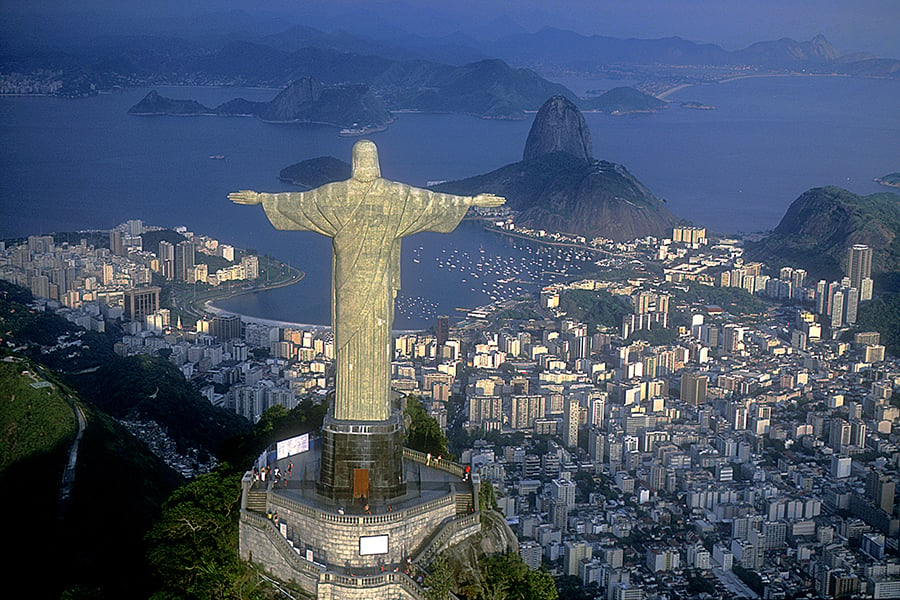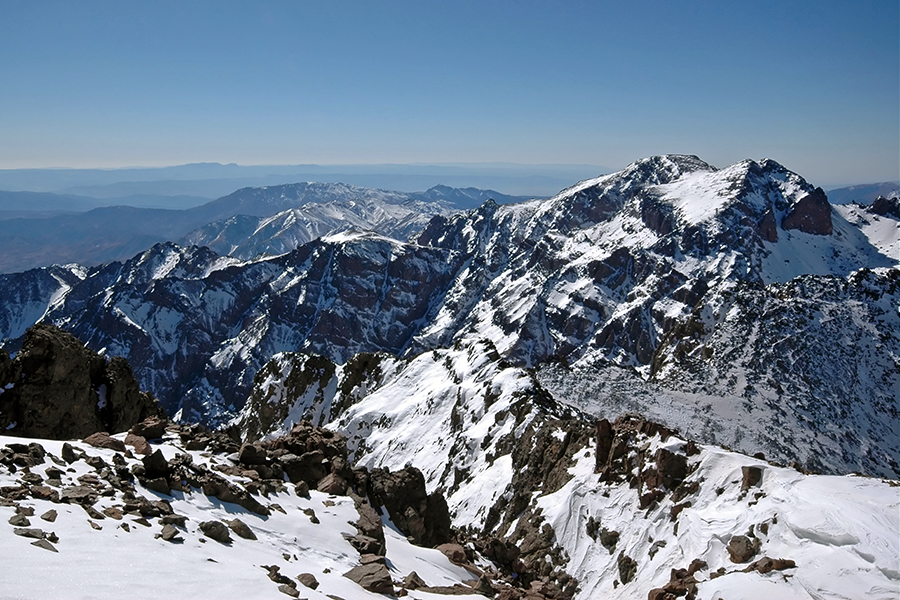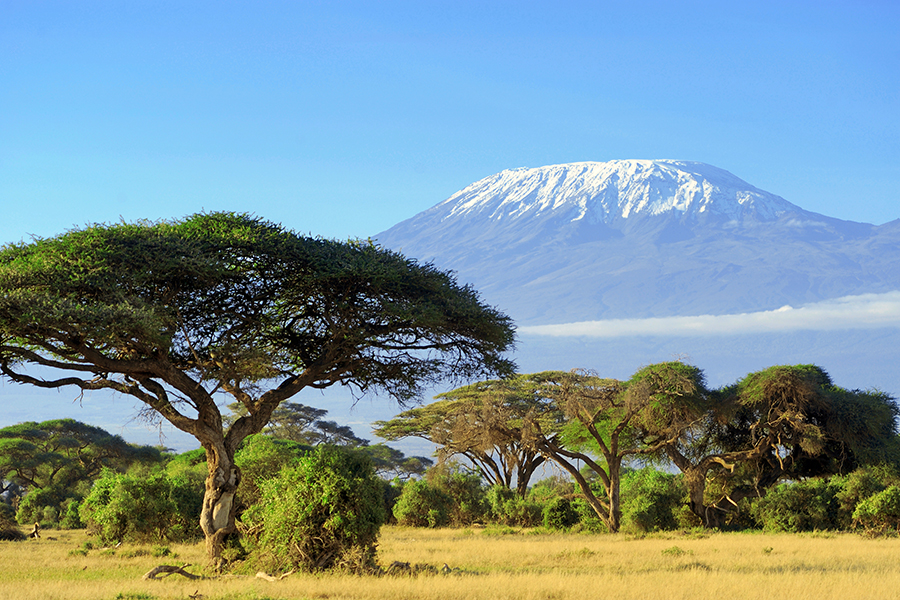It’s hard to think of a greater sense of achievement than reaching the summit of a mountain. That feeling of elation and relief as you look down on the world far below, knowing that you have made it.However, if the idea of mountain climbing conjures up unwelcome images from ‘Touching the Void’, we’ve listed some mountains you can tackle with no climbing experience. You won’t need ropes, ice picks or oxygen tents - just a guide (in some cases), a good level of fitness, a sturdy pair of walking boots and a lot of will power! What’s more, they are all easy to include on a round the world ticket!Whilst these summits can’t really be considered a walk in the park, we’ll begin with the easiest and work our way up. Ready?
The Corcovado: Rio de Janeiro, Brazil – 710m

You might not know the name but you‘re sure to instantly recognise this iconic landmark. The granite peak of the Corcovado is best known for being home to the statue of Christ The Redeemer that watches over the city of Rio de Janeiro. There is a road and a tourist train to the top, but to get maximum enjoyment from the incredible views over the sprawling city, beaches, ocean and across to Sugarloaf Mountain, you’re best off hiking all the way to the summit and earning the views!Off the beaten track this is not, so don’t expect to have the place to yourself! However, as you mingle with the hordes at the top, at least you can feel smug in the knowledge that you’ve done it the hard way. The best part is that you can get the train or bus back down to Rio, making Corcovado an essential summit for softies.strong>We can also help you organise a tour in Brazil, like the 17 day Brazil and Argentina tour ‘In Search of Iguassu’.
Table Mountain: Cape Town, South Africa – 1,084m

Dominating the Cape Town skyline, the distinctively flat-topped Table Mountain is one of the most recognisable natural landmarks in the world. While it’s certainly an impressive sight to gaze up at from the city, if you want to see how the world looks from the top, it’s only a short hike away.There are an incredible number of different paths to the top (as many as 350!) and some are much easier than others. The path along Pletteklip Gorge, for example, is one of the most direct and straightforward. It should take between 2-3 hours depending on your level of fitness, and your efforts will be more than rewarded once you take in the unforgettable views over Cape Town and out across the ocean from the summit. You can then hop on the cable car to take you back down to Cape Town to have a celebratory beer or two!
Mount Kinabalu: Borneo, Malaysia, 4,095m

The highest peak in South East Asia, Mount Kinabalu is located within the beautiful Kinabalu National Park, a World Heritage Site in Borneo. This is the first of our ascents where altitude sickness could be an issue - if you start to feel at all unwell, descend slowly.The climb begins from the park headquarters (1800m), taking you up to Laban Rata (3273m) metres for your overnight stop, before attempting the summit early the next morning. Whilst the trek up to Laban Rata is not technically difficult, the steps carved into the mountainside are steep and so relentless that, unless you’re super fit, you’re likely to feel the effects in your legs for several days after.It takes around 4-6 hours to reach your overnight lodge for the night, where you can relax on the terrace and soak up the panoramic views across Borneo. Be prepared for an early start the next morning for the steep scrabble to the top – high above the clouds, watching the first rays of sun cast a golden glow over the jagged mountain tops, is a worthy reward for making it to the summit. We can help you organise some amazing adventures in Borneo, like the 19 day G Adventures tour, ‘Borneo Encompassed’.
Jebel Toubkal: the Atlas Mountains, Morocco, 4,167m

Dominating the skyline of the exotic city of Marrakech, Jebel Toubkal is the highest mountain in the Atlas range. This challenge actually involves quite some effort just to reach the start of the climb. Your trek starts from the mountain village of Imlil - from there it’s a full day’s hike to the refuge where you overnight, before attempting the summit the next morning.As late in the year as May, you can be trudging through snow before you even reach the refuge; the best time to go is between June and September, otherwise you’re likely to need crampons and the whole thing just gets more technical, which is not what we are looking for here!The Refuge de Toubkal is the only place to stay and, while comfortable enough, sharing a dormitory with a dozen or so snoring strangers is unlikely to be the highlight of your trip. Get a head start by heading off early the next morning – it’s a genuine challenge to get to the top - a long, steep climb of almost 1000 metres.The sense of stillness and isolation that awaits you at the summit, not to mention the stunning vista across the Atlas Mountains and desert beyond, makes all the pain and struggle just melt away. We can find you a trekking trip into the Atlas Mountains as well as other tours in Morocco.
Mt Kilimanjaro: Tanzania (across the border from Kenya), 5,895m

Kilimanjaro is the highest mountain in Africa at almost 6000m - a dormant volcano that towers majestically over the plains of the Serengeti. It’s the highest walkable mountain in the world - and what a walk!It’s a real challenge, with your biggest potential obstacle being altitude sickness; to give yourself the best chance of avoiding this, the key is to take your time and ascend slowly. It takes most people 5-7 days, and there are a number of possible routes, the least difficult of which are the Rongai and Marangu.The sense of achievement on reaching the top, combined with the awe-inspiring vistas across the plains of Africa, make this an extraordinary, once in a lifetime experience. It’s a little disheartening when you realise that after several days climbing, it only takes one day to get back down, but that’s mountain climbing for you! We offer Kilimanjaro treks or combination tours of a Kilimanjaro climb with a Serengeti safari if you're interested in exploring Tanzania or Kenya.
Aucun commentaire:
Enregistrer un commentaire